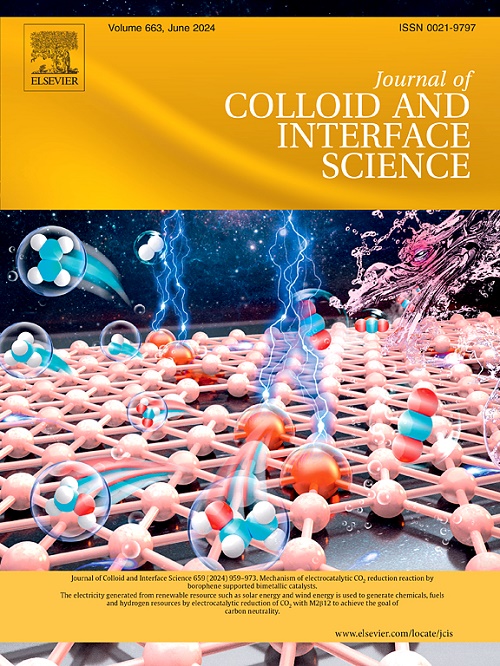Preparation of Au-modified metal organic framework nanozyme with tunable catalytic activity used for diabetic wound healing
IF 9.4
1区 化学
Q1 CHEMISTRY, PHYSICAL
引用次数: 0
Abstract
Nanozymes with tunable catalytic activity have attracted attention in the field of biomedicine. Bacterial infections are the main causes of delayed or chronic wound healing. Therefore, antibacterial nanoplatforms with tunable enzymatic activity are urgently required for diabetic wound healing. Here, we propose a strategy for constructing Au-cluster-modified Prussian blue (PB) nanospheres (PB-Au) as antibacterial nanoplatforms for diabetic wound healing. The obtained PB-Au exhibited tunable peroxidase (POD)-like activity and maintained both photostability and catalytic stability. These advantages enhanced the antibacterial ability of the PB-Au enzyme. The results show that the bacterial biofilm disruption rate of the PB-Au enzyme was approximately 86 %. The bacterial elimination rate exceeded 95 %. Western blot (WB) data indicated that the expression of vascular endothelial growth factor (VEGF) and platelet endothelial cell adhesion molecule-1 (CD31) was upregulated by PB-Au by approximately 1.3- and 1.4-fold, respectively. The WB results also suggested that PB-Au could promote angiogenesis. Animal experiments showed that PB-Au rapidly increased the temperature at the wound site by up to 52.6 ℃, which was beneficial for sterilization. The wound healing rate was approximately 98 %. The results demonstrate that PB-Au nanozymes with tunable peroxidase (POD)-like activities have great potential to accelerate diabetic wound healing.

求助全文
约1分钟内获得全文
求助全文
来源期刊
CiteScore
16.10
自引率
7.10%
发文量
2568
审稿时长
2 months
期刊介绍:
The Journal of Colloid and Interface Science publishes original research findings on the fundamental principles of colloid and interface science, as well as innovative applications in various fields. The criteria for publication include impact, quality, novelty, and originality.
Emphasis:
The journal emphasizes fundamental scientific innovation within the following categories:
A.Colloidal Materials and Nanomaterials
B.Soft Colloidal and Self-Assembly Systems
C.Adsorption, Catalysis, and Electrochemistry
D.Interfacial Processes, Capillarity, and Wetting
E.Biomaterials and Nanomedicine
F.Energy Conversion and Storage, and Environmental Technologies

 求助内容:
求助内容: 应助结果提醒方式:
应助结果提醒方式:


